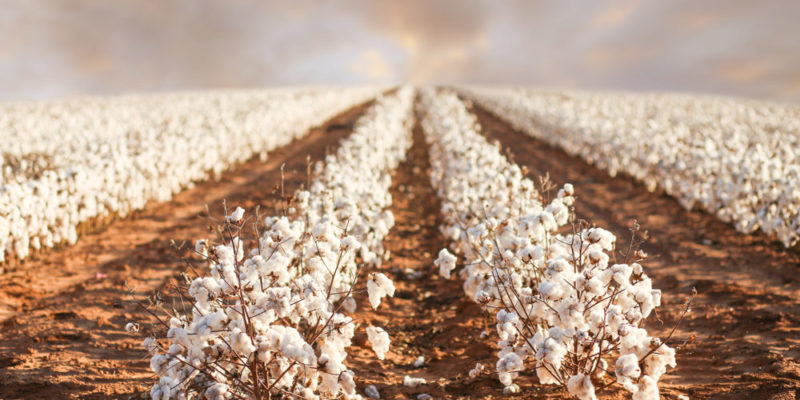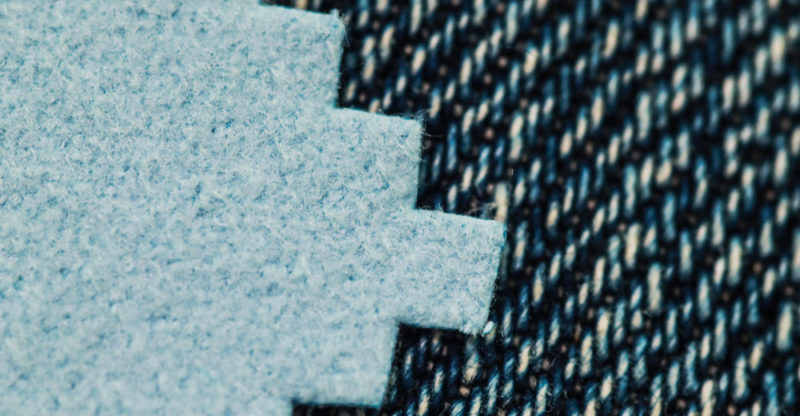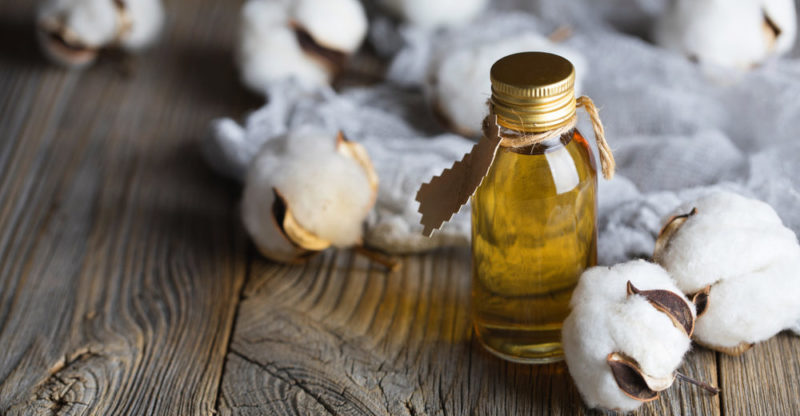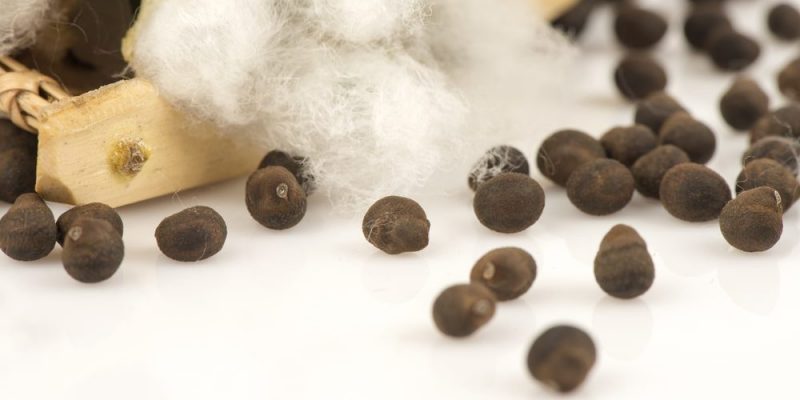We explain what cotton is, how it is grown and the various uses it has. Also, what are its general characteristics and classification.
What is cotton?
Cotton is a textile fiber of vegetable origin produced by a family of plants of the genus Gossypium and the Malvaceae family, known as algodonales, cotton trees or cotton plants.
This fiber grows in different proportions and lengths around the seeds of the plant and is usable for the industrial fabric manufacturing process, being today the most important natural fiber in the world.
Cotton is composed of pure cellulose , a biopolymer made up of glucose molecules , which appears in the form of white specks of soft, fluffy fabric, highly permeable to air , thus quickly absorbing moisture.
This makes it ideal for fabrics in hot and humid climates , which are light, easy to wash and comfortable.
Cotton name
Cotton fiber comes from various species of plants in the genus Gossypium.
The most cultivated species are:
- G. hirsutum , native to Mexico and the Caribbean.
- G. barbadense of Peruvian origin .
- G. arboreum , from India and Pakistan.
- G. herbaceum , native to Africa and the Arabian peninsula.
Origin of cotton

The name of cotton comes from the Arabic word to designate the plant from which it comes: al-qutun .
In Classical Antiquity (Greco-Roman) cotton was known but not cultivated . It was considered an exotic fabric that came from trade with India, called bómbyx in Greek (a term also used for silk) and carbasus in Latin, taken from the Sanskrit word karpäsa .
It was only in the 12th century that the Arabs introduced the plant to Europe .
In America , on the other hand, cotton was known since ancient times , and it is estimated that it began to be cultivated 8,000 years ago in the territory of present-day Mexico. Many other pre-Columbian cultures , such as the Incas , cultivated it profusely.
However, the production of these fibers on a massive and international scale began with the colonial rule of the 18th century and the subsequent Industrial Revolution , taking advantage of plantations in India and the Caribbean.
Cotton plant
There are more than 40 species of cotton plants , of which only four have commercial value ( G. hirsutum , G. barbadense , G. arboreum and G. herbaceum ).
They are distinguished not only in their origin ( Central America , South America , India and Africa respectively) but also in the length of their fibers and in the agronomic characteristics of their cultivation.
In general, cotton requires a very warm climate and a lot of water from rain or irrigation, which is why it occurs in the tropical or subtropical regions of both hemispheres only.
Cotton cultivation
 Growing cotton requires long periods of plenty of sun , moderate rain, and constant warm temperatures , preferably on heavy soils.
Growing cotton requires long periods of plenty of sun , moderate rain, and constant warm temperatures , preferably on heavy soils.It is a salt and drought tolerant crop , so it can be carried out in arid or semi- arid areas , as long as there is some form of irrigation, which however can lead to environmental damage, such as salinization of the soils .
The largest cotton growing areas are in China, India and the US , as well as in Pakistan, and in Egypt and Australia, places where it stands out for its quality.
The growth period of the plant takes between 150 to 180 days , so it takes at least 200 days without frost for its ideal growth.
The appearance of the first flower buds will take between 50 to 85 days, from 25 to 30 for the first flowers and 50 to 60 days for flowering.
Uses of cotton

Some 60% or so of cotton fiber is used in the manufacture of a huge range of clothing , from shirts, T-shirts, coats, jackets, to underwear, work clothes and jeans or "jeans".
It is also frequently used for bedding , lingerie, cleaning cloths, bedspreads, sheets, towels, gowns or for medical supplies such as gauze and bandages. Other products include canvas, industrial thread, and oils.
Cotton processing
The processing of cotton as a raw material for the textile industry includes the following stages:
- Initial processing. The raw cotton arrives from the field and is dried to facilitate its process, which begins with the separation of the fiber from the rest of the foreign matter: leaves, dirt, seeds, stems, etc.
- Yarn. Once the cotton fibers have been cleaned and stretched, they are spun, either manually or by hand on a spinning wheel, or on mechanical spinning machines. Either way, the goal is to bundle and twist the filaments to form multi-stranded yarns.
- Tissue. Using the warp of threads and the loom (artisan or industrial), we then proceed to the weaving, crossing the threads transversely and vertically, being able to trace shapes and figures by modifying the number of threads in the warp and the sequence in which they are interwoven. Throughout the process the threads receive a protective layer called "primer".
- Dyed and printed. To color the cotton, you can dye the already woven fabric, the loose fibers or the thread itself before weaving it. Copper rollers are also often used to fix illustrations or ornaments with stamping paste on the fabric.
- Treatment. Finally, a series of chemicals and reinforcers are applied to the fabric that guarantee its durability, its resistance to insects , and so on.
Types of cotton
 We can speak of several types of cotton according to their biological origin:
We can speak of several types of cotton according to their biological origin:
- Synthetic. One that is obtained through genetic engineering, altering its properties to obtain unpublished variants of the species.
- Biological. Traditional cotton, whose improvements can occur through crosses and manipulation of the cultivation elements (water, soils, etc.) but without using transgenic seeds .
- Ecological. It is cotton harvested without transgenic seeds but without industrial agricultural techniques, such as pesticides or supplements, thus preserving the environment and betting on sustainable agriculture.
Cottonseed oil

It is the oil obtained from cotton seeds, to which the press and a deodorization process are applied . It is considered a food oil, with a slight chestnut flavor, whose color tends to be light gold or reddish yellow.
Cotton plant pests and diseases
Cotton crops can be attacked by different pests , which deserve protection in the form of pesticides, agrochemicals or the introduction of animal species that prey on parasitic species.
These pests include cutworms ( Spodoptera sp ), insects such as thrips ( Leucothrips theobromae ), aphids ( Aphis gossypii ) or sucking weevils ( Eutinobothus gossypii ).
To this must be added the common presence of fungi in late shoots , which prevents the proper growth of the plant.
Cotton export and import
 The main cotton exporting countries are the US, Brazil and Australia , among more than 100 countries where it is grown.
The main cotton exporting countries are the US, Brazil and Australia , among more than 100 countries where it is grown.Of this production, the largest consumer on the planet is China , whose huge textile industry requires 40% of the raw cotton produced in the world.
The above content published at Collaborative Research Group is for informational and educational purposes only and has been developed by referring to reliable sources and recommendations from technology experts. We do not have any contact with official entities nor do we intend to replace the information that they emit.
Abubakr Conner brings a diverse skill set to our team, and covers everything from analysis to the culture of food and drink. He Believes: "Education is the most powerful weapon that exists to change the world." .
Leave a reply
Your email address will not be published. Required fields are marked *Recent post

Sport: What Is It, Types, Risks, Features, Characteristics and Examples

Dogs: Emergence, Features, Characteristics, Feeding and Breeds

Story: Definition, Elements, Structure, Features and Characteristics

